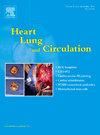Outcomes of Septal Myectomy Associated With Surgical Volume
IF 2.2
4区 医学
Q2 CARDIAC & CARDIOVASCULAR SYSTEMS
引用次数: 0
Abstract
Background & Aim
Previous studies have reported an inverse relationship between hospital septal myectomy (SM) volume and outcomes, without assessments of surgeon volume and SM outcomes. This Australia and New Zealand–based study sought to appraise the relationships between hospital volume, surgeon volume, and SM outcomes.
Methods
Data were collected from the Australian and New Zealand Society of Cardiac and Thoracic Surgeons Database, from the time of inception of the Australian and New Zealand Society of Cardiac and Thoracic Surgeons Database (2001) until 1 January 2021. Hospitals were divided into the lowest (one to three cases), middle (four to six cases), and highest tertiles (more than six cases) based on their annual SM case volume.
Results
This study cohort included 1,132 patients and 115 surgeons. The surgeon volume ranged from one to 91 cases in total. The overall 30-day mortality after SM was 2.2%, and the rate of new-onset complete heart block requiring permanent pacemaker was 7.5%. Concomitant mitral valve repair and mitral valve replacement were performed in 8.1% and 11.7% of patients, respectively. Concomitant mitral valve replacement was associated with increased mortality. Septal myectomy performed at low-volume centres had a significantly higher mortality rate (4.9%) than at the middle- (1.3%, p=0.002) and the high-volume centres (1.1%, p=0.004). Surgeons who performed SM on patients who subsequently died within 30 days of SM had a significantly lower case volume than surgeons who performed SM on patients who were alive.
Conclusion
This study highlights the importance of centre and surgeon case volume in outcomes after SM.
室间隔肌瘤切除术的结果与手术量有关。
背景与目的:以前的研究报道了医院中隔肌切除术(SM)的体积与结果呈负相关,但没有评估外科医生的体积和SM的结果。这项以澳大利亚和新西兰为基础的研究旨在评估医院数量、外科医生数量和SM结果之间的关系。方法:数据来自澳大利亚和新西兰心脏和胸外科学会数据库,从澳大利亚和新西兰心脏和胸外科学会数据库建立之时(2001年)到2021年1月1日。根据每年的SM病例数,将医院分为最低(1至3例)、中等(4至6例)和最高(6例以上)三类。结果:该研究队列包括1132名患者和115名外科医生。手术量为1 ~ 91例。SM后30天的总死亡率为2.2%,需要永久性起搏器的新发完全性心脏传导阻滞率为7.5%。同时进行二尖瓣修复和二尖瓣置换术的患者分别为8.1%和11.7%。合并二尖瓣置换术与死亡率增加有关。在小容量中心进行的隔膜切除术死亡率(4.9%)明显高于中等容量中心(1.3%,p=0.002)和大容量中心(1.1%,p=0.004)。对术后30天内死亡的患者实施SM的外科医生的病例量明显低于对活着的患者实施SM的外科医生。结论:本研究强调了中心和外科医生病例量对SM后预后的重要性。
本文章由计算机程序翻译,如有差异,请以英文原文为准。
求助全文
约1分钟内获得全文
求助全文
来源期刊

Heart, Lung and Circulation
CARDIAC & CARDIOVASCULAR SYSTEMS-
CiteScore
4.50
自引率
3.80%
发文量
912
审稿时长
11.9 weeks
期刊介绍:
Heart, Lung and Circulation publishes articles integrating clinical and research activities in the fields of basic cardiovascular science, clinical cardiology and cardiac surgery, with a focus on emerging issues in cardiovascular disease. The journal promotes multidisciplinary dialogue between cardiologists, cardiothoracic surgeons, cardio-pulmonary physicians and cardiovascular scientists.
 求助内容:
求助内容: 应助结果提醒方式:
应助结果提醒方式:


